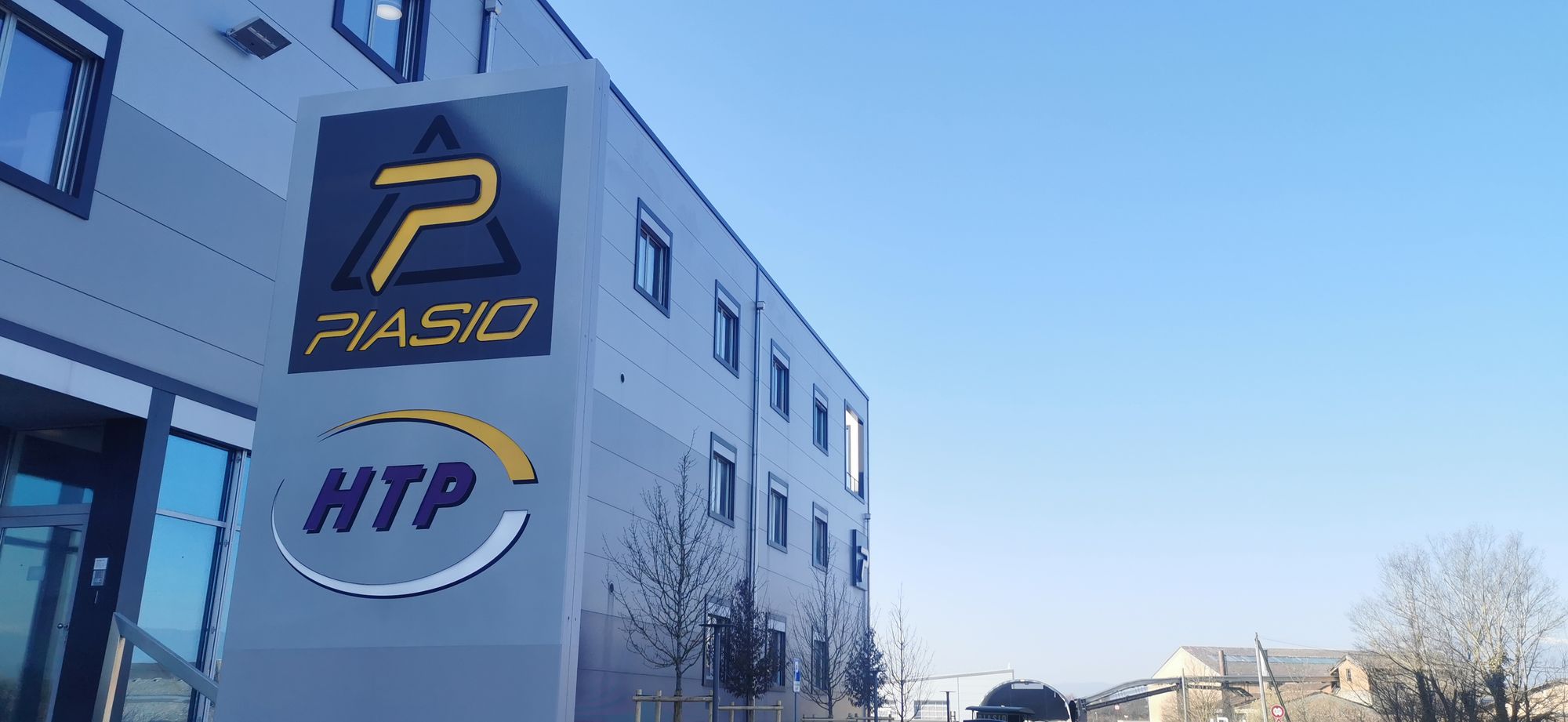
#15 SUSTAINED By The G|O - Wednesday, February 9 2022
This is an onsite, slightly edited republication of the complete SUSTAINED - THE SDGS DECODED newsletter of February 9th 18th, 2022
✺ POLLUTION-HUNGRY MUSHROOMS IN GENEVA Imagine a world where mushrooms could help clean up oil spills or other major environmental catastrophes? The scenario might seem far-fetched, but in fact research on the topic is showing enormous potential, right here in Geneva. Local start-up YpHen is currently using the canton's soil as a test-ground for some promising fungi-related science. The company’s team recently purified 500 tons of polluted land on construction company PIASIO HTP’s underground sites in Plan-les-Ouates. The process lasted just four months—much less time than traditional methods relying on chemistry or technology, which can take years. Other test sites are currently being identified.
✺ COINTRIN'S ATTEMPT TO TACKLE ENERGY EFFICIENCY SUSTAINED’s Greenwashing Radar takes off this week at Geneva Airport’s new East Wing, whose infrastructure claims “100% energy efficiency” in the long run. SUSTAINED assesses Cointrin’s ambitious goal with University of Geneva energy expert Pierre Hollmuller, who responds with critical input.
✺ SUSTAINED NEWS IN BRIEF Don’t miss out on our SUSTAINED News in Brief. This week, we take a peek at a controversial new EU green label and a sustainability accelerator at Nestlé.
The slow bloom of the pollution-eating fungi business
A coastline blackened by a massive oil spill; a field depleted of fertility due to pesticides; a plot of land rendered unusable because of industrial activity. These are some of the desperate states of nature that local Thonon-based company YpHen is targeting with its hydrocarbon-, pesticide-, and PCB-eating mushrooms.
“Traditionally, chemical, thermal, or mechanical solutions have been preferred for cleaning polluted land,” deplores Didier Chifflet, the company’s head of marketing. “These are very costly, energy-draining, and generally unsustainable solutions. Burning or burying the pollution are other options—a particularly shocking thought, given the climate crisis. Our mushrooms are the only option for a quick, efficient, organic, and cost-effective solution. With the right research and development, our technique could restore ecosystems throughout the globe.”
Whether used for commercial purposes or environmental motives, the regenerative power of mushrooms and their ability to clean up land and water on a massive scale have been common knowledge for decades. In his 2008 Ted Talk, celebrity mycologist Paul Stamets implored the scientifically ignorant citizens of the planet to consider how fungi might hold the key to our natural systems’ rebirth: “Mycelium absorbs oil. It produces enzymes—peroxidases—that break carbon-hydrogen bonds. These are the same bonds that hold hydrocarbons together. So, the mycelium becomes saturated with the oil.”
Resisting change
Knowing this, one would expect construction companies, oil refineries, and chemical industries to be investing massively in science that could ultimately reduce their sanitation bills while scoring some serious environmental points. Public authorities could also help push for more sustainable ways to render our land safer for housing or farming. However, the truth of the matter is that research and development funds have been extremely difficult to access for the scientists capable of fine-tuning the organic, fungi-based method: “I have been talking to companies, authorities and potential investors for years about these mushrooms, with no results,” confides Professor François Lefort, from the HES School of Engineering, Architecture, and Landscape (HEPIA).
The professor supervised the research currently being used by YpHen, long before the company was launched in 2018. “With my research partner Clément Deprade, who ended up initiating the local mycH2Opure project, I have led dozens of seminars, conceived to show stakeholders how these mushrooms operate. Each time, people have expressed sincere interest in our studies, but nobody is willing to put in the time and funds needed to select the right strains. At this stage in the process, only collaborations with companies like YpHen or mycH2Opure can bring this science to the next level, with efficient pilot installations.”
Ignorance, then momentum
The stakes are high. Removing polluting and toxic components from soil and water are major issues that are currently being dealt with in an extremely unsustainable manner. To clean polluted ecosystems, industries and communities have been either generating additional pollution—through incineration or chemical processes—or delocalizing toxins, by excavating them and burying them deep in the ground elsewhere. Why? “Ignorance,” according to Swiss mycologist Trello Beffa. “Environmental government officials are not yet sufficiently informed when it comes to microbiology techniques being applied to the environment and within industries. The lack of scientific information and knowledge where decisions are being made is creating obstacles to optimizing new ecological techniques that could strongly benefit society.”
Trello Beffa has been using micro-organisms, bacteria, and mushroom strains to purify polluted water and soil for the past 20 years—a business conducted with the passion of conviction, due to a certain mushroom-mistrust frequently expressed by the market’s stakeholders. “More than three-quarters of the time, my method works, and my clients are satisfied. The rest of the time, I need to tailor the technique to the sites, which vary in composition,” says Beffa, who is struggling to bring his company MADEP SA to a more mainstream client portfolio. “I’m pretty much all alone in this business, and I have often had to fund research and development out of my pocket. Another aspect is that when it comes to new techniques using living natural organisms, there are no guarantees. These methods require time and money. This is something that CEOs and communities have trouble accepting.”
However, at this time of climate urgency and rising environmental awareness, depolluting mycology solutions might finally be accepted by a wider market. “This science is rapidly gaining momentum. I believe that its development will increase from here on," concludes François Lefort.
THE GREENWASHING RADAR: SUSTAINABILITY CLAIMS DECODED
HOW ENERGY EFFICIENT IS GENEVA AIRPORT'S NEW EAST WING?
Cointrin’s new East Wing building—520 meters long and 20 meters wide, replacing the temporary aircraft hall built in 1975—is a 610 million franc “step in the right direction,” according to Pierre Hollmuller, energy system expert and lecturer at the University of Geneva. But will the structure, which has 7000 square meters of internal capacity and guarantees “100% percent energy efficiency,” be up to society’s carbon-neutral goals in the long run?
AMBITIOUS CLAIMS
“As presented in the press release, Cointrin’s new East Wing building is an ambitious project which combines the two major drivers of sustainable energy management: on the one hand, efficiency measures to reduce the energy demand for heating, cooling, lighting, and ventilation; on the other hand, renewable energy production for heating and cooling (by way of geothermal probes and use of the GéniLac network), as well as for electricity production (by way of solar panels),” analyzes Pierre Hollmuller. “However, the devil is in the detail, and a thorough assessment of the specific project would require access to more details, as well as an in-depth analysis.”
As an example, Pierre Hollmuller points out that 100% energy efficiency is nearly impossible when using heat pumps, which partially rely on electricity grid, particularly at night and during winter. “While Swiss electricity production is mainly CO2 free and about 60% renewable, we are integrated into the European grid and also rely on imports—namely from Germany, which still has an important fossil-based electricity system.” Nonetheless, Mr. Hollmuller points out that switching from gas or oil boilers to heat pumps already has the potential to reduce related CO2 emissions by a factor of five. However, another issue concerns the use of heavily glassed façades, which need adequate solar protection during the summer period, for reduction of solar gains and related cooling demand.
POSITIVE EFFORT
Despite these warnings, our expert emphasizes that projects like Cointrin’s new East Wing building are in line with the objectives of the new cantonal energy masterplan, which envisions, by 2050, a reduction of territorial primary energy needs to 1000 W per inhabitant (3.5 times less than today)—of which three-quarters would be covered by renewable energies. “A specific issue concerns the heating of buildings, which represents about half of the cantonal energy consumption. Currently, between 80–90% of Geneva’s buildings depend on fossil fuels, by way of gas or oil boilers,” according to the expert. “Besides the development of heat pumps at the individual building level, the Services Industriels Genevois (SIG) and the Canton of Geneva are striving to develop district heating networks, which will enable the use of important, centralized renewable heat sources, like medium-depth geothermal energy.” The latter technique consists of digging up to two kilometers underground, to access water at 40–70 °C, which could be used directly for space heating and domestic hot water production.
An upcoming cantonal vote this Sunday (Développement des réseaux thermiques structurants), aimed at defining the terms of the future regional district heating network, is the next step in bringing Geneva closer to an energy-efficient management of its constructions. “The new law would largely contribute to reaching at least 80% renewable heat within a reasonable deadline,” concludes Pierre Hollmuller.
Sustained News in Brief
EU LABELS GAS AND NUCLEAR ENERGY AS SUSTAINABLE
The European Commission is facing a backlash, after ruling that gas and nuclear energy should be classified as climate-friendly, under a new green investment label being granted to stakeholders, provided they meet certain criteria. According to a document consulted by the Financial Times, the expert group that drafted the criteria over the past three years has advised the EU to refuse to sanctify natural gas–produced electricity that emits more than 100 grams of CO2 per kilowatt-hour. Nevertheless, the coveted label will be granted to those who use natural gas as a replacement for coal.
NESTLE GOES GREENER WITH ITS COCOA FARMERS
Child education, gender equality, water, and healthcare will all be addressed in Nestlé SA’s new cash incentives to cocoa farmers. The major food multinational plans to triple its sustainability efforts in the cocoa realm, and will invest a total of 1.3 billion Swiss francs by 2030, aimed at improving the livelihood of farming families.
Today's Sustained: Sarah Zeines
Edited by: Dan Wheeler
